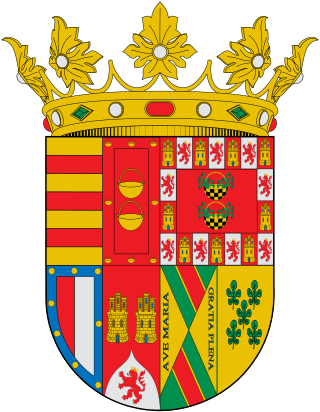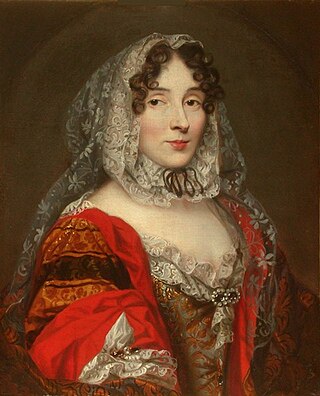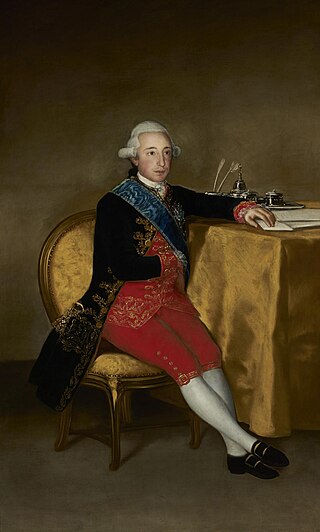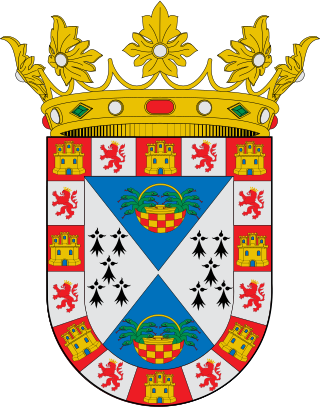Regime during the 19th and 20th centuries
During the reigns of the last two Kings before the proclamation of the Second Spanish Republic, Alfonso XII and Alfonso XIII, the “Caballerizo”, which joined to his function that of the “Montero mayor” (Great Hunter) of the King (which was an Office created during the reign of Isabella II), was the second person in category after the Mayordomo mayor having the sole authority so soon the Monarch left the Royal Palace. Only a peer that had the rank of Grandee of Spain could be nominated for this Office. His annual wages were 15.000 pesetas, the same ones that had the “Mayordomo” and, equally, he had the right to a private office at the Royal Palace of Madrid.
Under his command they were the "Primer Caballerizo" (First Equerry) and the "Primer Montero" (First Hunter) with wages, both, of 7.500 pesetas per year. Under them they were situated the "Caballerizos de campo" (Equerries), who, usually, were officers of the Army.
The “Caballerizo” accompanied the King in all his trips or, as it was called, "days" and sat close to him in every carriage, in car or in the trips by train or by ship throughout Spain or foreign countries.
The “Caballerizo mayor”, with assistance of the First Caballerizo, was the chief of the Royal Mews. Also, he was the chief of the Armory of the Royal Palace of Madrid.
As “Montero mayor”, with the help of the First Montero, he managed the hunting lodges of the Heritage of the Crown and organized the hunts attended by the King on the hunting-grounds of the Crown as the Royal forests of El Pardo, the Royal Hunting Lodge of la Encomienda de Mudela or the Royal forests of Valsaín. In the hunts organized by others, and attended also by the King, the “Montero mayor” was always accompanying him in that condition.
As “Montero mayor” equally, his uniform was of green very dark cloth with own embroideries in form of branches of oak.
In the Public Chapels and official ceremonies he normally stood right behind the Mayordomo mayor.
He was styled “Excelentísimo señor Caballerizo y Montero mayor de Su Majestad”.
This Office was suppressed after the proclamation of the Second Spanish Republic in 1931 and never re-created after the restoration of the Monarchy in 1975.

Gaspar Méndez de Haro, 7th Marquess of Carpio, Gaspar Méndez de Haro y Fernández de Córdoba, or Gaspar de Haro y Guzmán(1 June 1629 – 16 November 1687), 3 times a Grandee of Spain including the Carpio Marquisate since 10 May 1640 by king Philip IV of Spain, Governor of Flanders, Ambassador in Rome, 1677–1682, Viceroy of Naples, 1683 - died in office there in 1687, 2nd Duke of Montoro since November 1661, and many other high nobility titles, was a Spanish political figure and art collector.
The Sicilian title Duke of Bivona stems from the middle 16th century. Bivona is in Sicily, which had been conquered by Peter III of Aragon in 1282. It was given to people related to the powerful medieval Aragonese family of Luna, Zaragoza.

Duke of Sessa is a Spanish noble title awarded to Gonzalo Fernández de Córdoba by Ferdinand II in 1507. It was the fifth ducal title bestowed on Gonzalo, after the ducal titles of Santángelo (1497), Terranova (1502), Andría (1507) and Montalto (1507).
DoñaVictoria Eugenia Fernández de Córdoba y Fernández de Henestrosa, 18th Duchess of Medinaceli, GE was a Spanish noblewoman and Grandee of Spain. She was the head of the Spanish noble House of Medinaceli and patron of the Ducal House of Medinaceli Foundation. In addition to her most senior title of Duchess of Medinaceli, she held an additional 49 other hereditary noble titles during her lifetime, making her the second-most titled noblewoman in Spain, just after Cayetana Fitz-James Stuart, 18th Duchess of Alba. She died in Seville on 18 August 2013, aged 96.
Juan Carlos Pérez de Guzmán y Fernández de Córdoba, 11th Duke of Medina Sidonia (1642–1713) was a Spanish noble who became Duke of Medina Sidonia in 1667 upon the death of his half-brother Gaspar Juan Pérez de Guzmán, 10th Duke of Medina Sidonia.

Pedro de Alcántara Alonso Pérez de Guzmán y Lopez-Pacheco, 14th Duke of Medina Sidonia was a Spanish noble who became Duke of Medina Sidonia in 1739.

Count of Chinchón is a title of Spanish nobility. It was initially created on 9 May 1520 by King Charles V, Holy Roman Emperor, who granted the title to Fernando de Cabrera y Bobadilla.

The Camarera mayor de Palacio was the Official of the Royal Household and Heritage of the Crown of Spain, who was in charge of the person and the rooms of the Queen of Spain.
The Mayordomo mayor was the Officer of the Royal Household and Heritage of the Crown of Spain in charge of the person and rooms of the King of Spain. The Office of “Mayordomo mayor” was suppressed after the proclamation of the Second Spanish Republic in 1931 and never re-created after the restoration of the Monarchy in 1975, but it can be said that it is the historical precedent of the modern Head of the Royal Household of Spain.
The Sumiller de Corps was the Officer of the Royal Household and Heritage of the Crown of Spain in charge of the more intimate and inner rooms of the King of Spain. He was responsible of the most immediate service to the Monarch. This Office was suppressed after the proclamation of the Second Spanish Republic in 1931 and never re-created after the restoration of the Monarchy in 1975.
The Gentilhombres Grandes de España con ejercicio y servidumbre was a palatial class of honorary royal servants of the Royal Household and Heritage of the Crown of Spain, who were entrusted with certain functions at the service of the Monarch which they exercised by rigorous seniority.

Marquess of Priego is a hereditary noble title of the Kingdom of Spain that Ferdinand the Catholic granted on 9 December 1501 to Pedro Fernández de Córdoba y Pacheco, 7th Lord of Aguilar in Córdoba, of the house of Córdoba. It is one of the most important noble titles in Spain, and was made a first class grandee in 1520 by Charles V, Holy Roman Emperor.

Vicente Pío Osorio de Moscoso y Ponce de León, 13th Count of Altamira, GE, OM, LH, was a Spanish peer, Head of the House of Osorio. He held 109 titles of nobility, mostly in the peerage of Spain, and was 14 times a Grandee, making him the most titled person in the history of the world.

Marquess of Astorga is a hereditary title in the Peerage of Spain, accompanied by the dignity of Grandee and granted in 1465 by Henry IV to Álvar Pérez Osorio, 2nd Count of Trastámara and captain general of Galicia and Asturias.

Vicente Joaquín Osorio de Moscoso y Guzmán, 11th Count of Altamira, GE, was a Spanish peer, politician and diplomat who served as Consejero de Estado and president of the Junta Central during the reign of Charles IV. He was also ambassador in Vienna and Turin.

Duke of Sanlúcar la Mayor is a hereditary title in the Peerage of Spain, accompanied by the dignity of Grandee and granted in 1625 by Philip IV to Gaspar de Guzmán, 3rd Count of Olivares and royal favourite to the king.

Duke of Baena is a hereditary title in the Peerage of Spain, accompanied by the dignity of Grandee and granted in 1566 by Philip II to Gonzalo Fernández de Córdoba II, who was the 7th Lord of Baena, 5th Count of Cabra and 3rd Duke of Sessa, Santángelo, Terranova, Andría and Montalto.

Duke of Soma is a hereditary title in the Peerage of Spain, accompanied by the dignity of Grandee and granted in 1502 by Ferdinand II to Ramón Folch de Cardona, 11th Baron of Bellpuig and 1st Count of Oliveto, for his services as viceroy of Sicily.

Duke of Medina de las Torres is a hereditary title in the Peerage of Spain, accompanied by the dignity of Grandee and granted in 1625 by Philip IV to Gaspar de Guzmán, 3rd Count of Olivares and royal favourite to the king. A few days later, the king granted him the Dukedom of Sanlúcar la Mayor.













